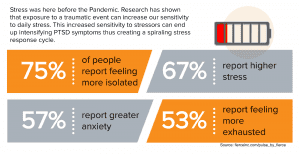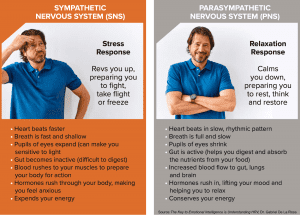Weekends are too short, and work days are too long. When you can always be reached, you feel like you are always at work.
That constant feeling that there is no time to unplug or step back, never mind enough time to inspect why you’re always so tired, tends to add up. No wonder we all feel so drained!
Workplace Stress Has Changed; How We Handle It Hasn’t
The pandemic upended the way we work, increasing workplace stress and decreasing productivity. The effect is not just in your head. While 2022 data is not available everywhere, workplace stress cost $35 billion of lost productivity in the United Kingdom alone, highlighting the scale of the total cost around the world.
A trend long in the making, the past few years have seen workplace stress grow. The rapid rise of remote and hybrid work during the pandemic meant the workplace of tomorrow arrived three years ago. Only now are employees and employers alike figuring out how to put up proper boundaries to protect everyone’s wellbeing.
Fortunately, the same advances which kept us connected while out of the office can help us tackle our stress head on. The technological advances which enable us to always be on the go can be used to slow things down. That way, we can get a handle on our stress by better understanding our stressors.

Advanced Problem, Advanced Solution
If we do not get to the bottom of stress, the drawbacks cannot be overstated. Right now, lack of engagement, due in no small part to workplace stress, costs the global economy over $8 trillion dollars a year. Too many employees feel overextended, never getting to relax and recharge. This impacts their ability to operate effectively, at home and work alike.
The stress and the burnout build upon each other. Stressed employees contribute to a more stressful work environment, decreasing team cohesion. As the wellbeing and productivity of the team goes down, it can gain a momentum of its own.
When it comes to reversing these negative trends, companies have too often recycled implementation of the same ineffective policies, policies which too often put more stress on the plates of employees and their supervisors.
Harnessing the connectivity of the Internet of Things can make stressors more digestible. We are not always the most reliable narrators when it comes to why we are stressed, or what exactly causes us stress. However, the wearable technology we already wear in our day-to-day lives can give us a reliable narrative. Biometrics never lie.

Workplace stress had long been on the rise, but now more than ever the line between work and home has blurred. What’s worse is that we find misplaced stress being applied and experienced broadly in people’s lives.
Bottom Up, Top Down: Dealing with Stress That’s All Around
The top-down model, in which stressed out managers meet with stressed out employees to discuss stress, does not work. Stress is an intangible concept and managers are ill equipped on how to address past the usual “Take some time off” or the dreaded “Things will ease up soon.”
This creates yet another meeting doomed to contribute to, rather than reduce, wasted productivity. Companies must understand that stress mitigation is not only to improve employee wellbeing. When they get underneath the core issues, it will directly improve company performance, mitigate misunderstandings and risk, lead to higher retention rates, and foster a positive work environment which makes that improvement sustainable.
However, as with myriad meetings that could have been emails, general understanding of stress isn’t enough. Connecting the data from smartwatches and other wearable devices with the smartphones we all carry, and pulling in calendar and GPS data provides the context that drives self-awareness and action. That way, the same device which tethered us to our jobs can help us create some separation.
Combining biometric data with calendar and GPS information from your smartphone, you can construct a chart to show not only when you were stressed, but where you were and who was with you. This allows you to deepen your awareness of your stressors and anxieties, enabling you to tackle them head on like never before.
Applying a dual approach, of bottom-up and top-down initiatives, enables stress to be tackled in a way tailored to the specific stressors faced by individual employees.









